Ireland & Britain
England & Scotland
Travel Stories
Interests & Hobbies
Outdoors & Activities
Advice for Visitors
About My Ireland Tour
News & What's On

Donegal and Sligo offer some of the most glorious and challenging vistas in Ireland for anyone looking to take them on. A naturally rugged and mountainous terrain that is constantly growing in popularity for people looking for their outdoor fix. There is an abundance of hostel accommodation, especially in the surfing obsessed villages of Donegal, that make for the perfect stay when all you need is a place to rest your head.
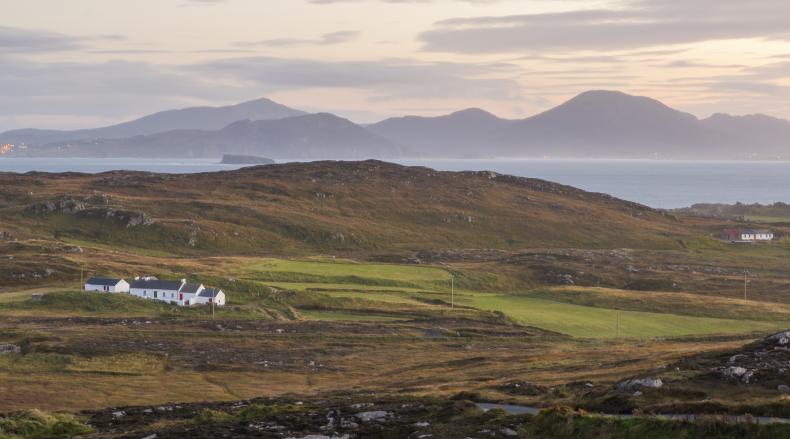
The landscape of Northwest of Ireland looks like something out of a walking and hiking magazine. Rugged mountain terrain and sprawling coastal vistas invite you to explore.
Don't forget your camera as you head to Melmore Head with its eight sandy beaches, none more beautiful than Boyeeghter Strand. From Trá na Rosann capark, a circular walk around the headland is a straightforward proposition as you set out, following the road south east before cutting north east to Invermore Bay. From there, follow the coast to Gortnalughoge Bay and Tranafaighboy before cutting across the headland and heading south just after Ravedy Island.
Skirt Melmore Hill past Altweary Bay toward Claddaghanillian Bay, then Boyeeghter Strand. The climb to Crocknasleigh's 163m summit will reward you with a stunning view over the Atlantic before you descend to Trá na Rosann beach and back to the carpark.
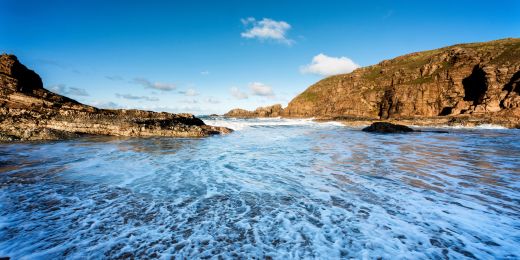
Known in Irish Gaelic as An Mhucais (the Pig's Back), Muckish is a table-top mountain from the same mould as Benbulbin in Sligo and is part of the Seven Sisters mountain chain that traverses northwest Donegal.
The two main routes to the summit are The Miners' Track (the more demanding route) or the more popular trail via Muckish Gap. For the latter, you will find parking spaces at the Muckish Gap Shrine.
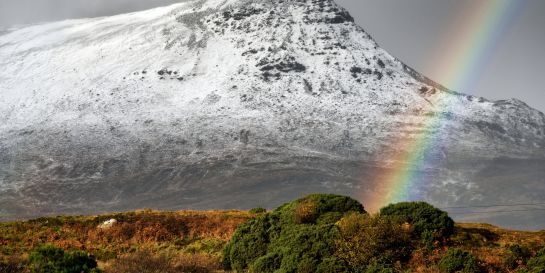
Fáilte Ireland has designated two walks in the Glencolmcille area as part of the national walks network, namely the Tower Loop and the Drum Loop. The former is of moderate difficulty, taking 2-3 hours to cover the six mile circuit. The latter covers most of the same ground, plus an additional (and fairly strenuous) two miles. For maps of the loop walks, click here.
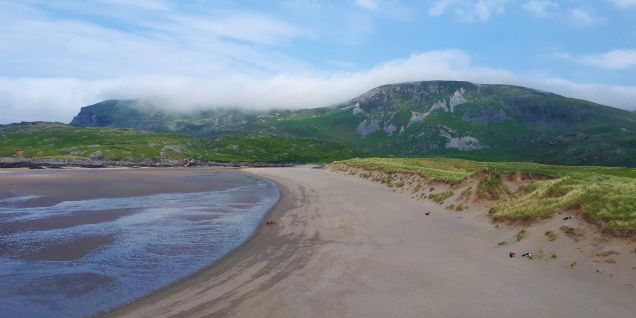
The ascent to the summit of Slieve League sea cliffs is probably the most popular walking route in northwest Ireland, and with good reason. Three times higher than the iconic Cliffs of Moher in Co. Clare, the 600-metre immensity of Slieve League is only beaten to the title of Europe's highest sea cliffs by the Croaghaun Cliffs on Achill Island.
For a three-hour out-and-back, take The Pilgrim Path from Teelin. Alternatively, to extend your trip and get the best photo angles of the cliffs, return to Teelin via One Man's Pass which takes you down to Bunglas before bringing you to country roads and Sliabh Liag Walk.
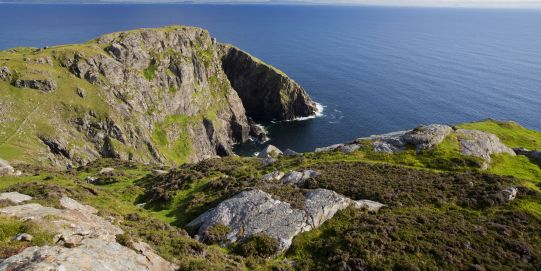
Part of the Dartry Range, Sligo's table-top Benbulbin mountain stands at 526m above sea level. Formed from Dartry limestone, a hard and fossil-rich bedrock, Benbulbin was gifted its iconic shape by glaciers during the last ice age.
Perhaps the most obvious and popular point of departure is Luke's Bridge: from here, the ascent up the gully toward the summit plateau is gentle and enjoyable. To extend the trip, head for the cave at Cartronwilliamoge or hike across to Benwiskin via Annacoona Top.

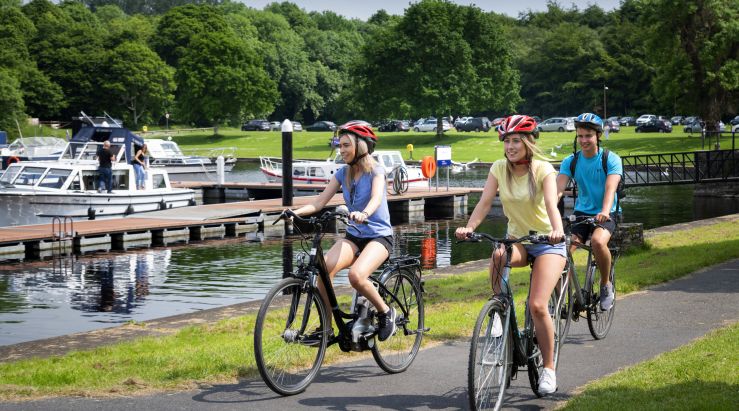
A blend of woodland trails, coastal tracks and woodland routes come together in offering families of all ages a wealth of cycling options.
Just five-minutes from Sligo Town on a bicycle, Doorly Park attracts cyclists to a network of paths and nature trails which showcase the best of this stunning wetland setting. There is a picnic site, a children's playground and an outdoor gym on site.
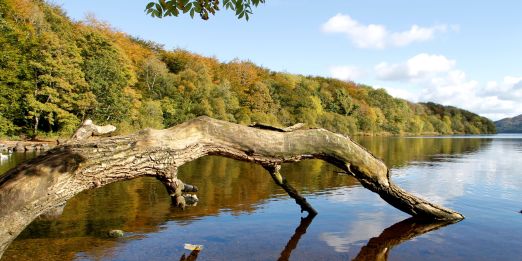
Witness the spectacular natural beauty of Lough Macnean on a 4km multi-use trail which hugs its western shoreline before contouring the foot of Thur Mountain. Some terrain here is very steep, making this less desirable for those with young children in the group.
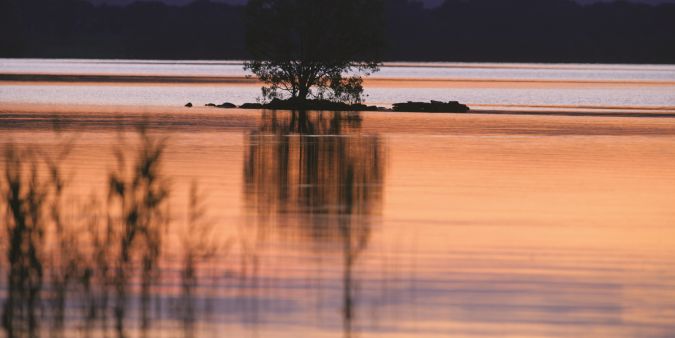
From Drumleague Lock, cycle down one side of the canal to Battlebridge Lock before returning on the other side to make what is technically but perhaps misleadingly referred to as a "looped cycling trail". On the east side of the canal, more ambitious groups can also continue on to Drumhauver Bridge.
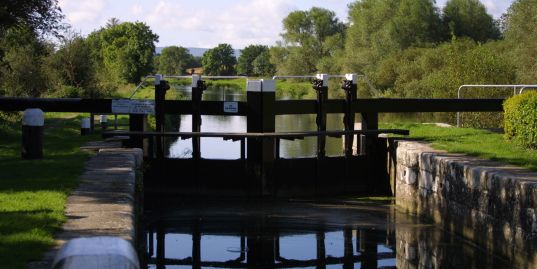
This peaceful woodland setting is home to an 8km traffic-free cycle trail suitable for families with kids' bikes, child seats or tag-a-longs. A great place to teach your children to cycle and develop their confidence on a bike.
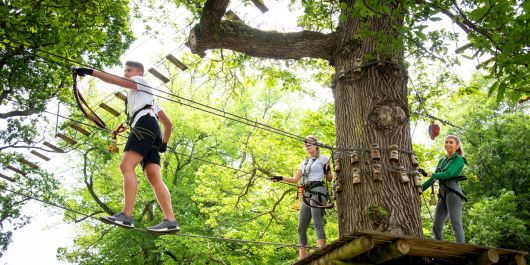
Falling on the route of the North West Trail (326km) the hard-packed sand at Rossnowlagh Beach is easy to cycle on, making this the perfect place to explore free cycling in a wide-open expanse with stunning coastal views. This blue-flag beach is known the locals as "The Heavenly Cove" and is considered by many to be the most scenic and dramatic beach in the north west of Ireland.
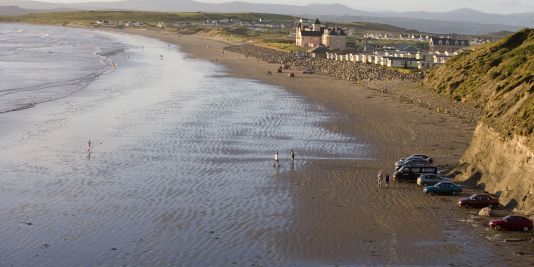
This 2.8km purpose built walking and cycling trail once served as the railway line for a Bord na Mona turf extraction facility. An hour of cycling along an easy, even pathway, sheltered by forestry, will culminate in your arrival at Lough McHugh
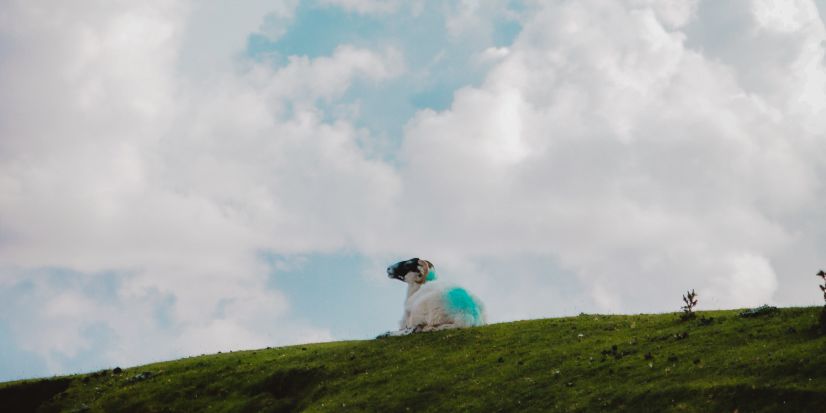
While enjoying these cycling routes it's important to stay safe and secure. We recommend that you always wear a bicycle helmet and if you’re cycling on or near roads, highly visible clothing, especially in poor light. If you ever leave your bikes unattended remember to always secure them with a good bicycle lock.